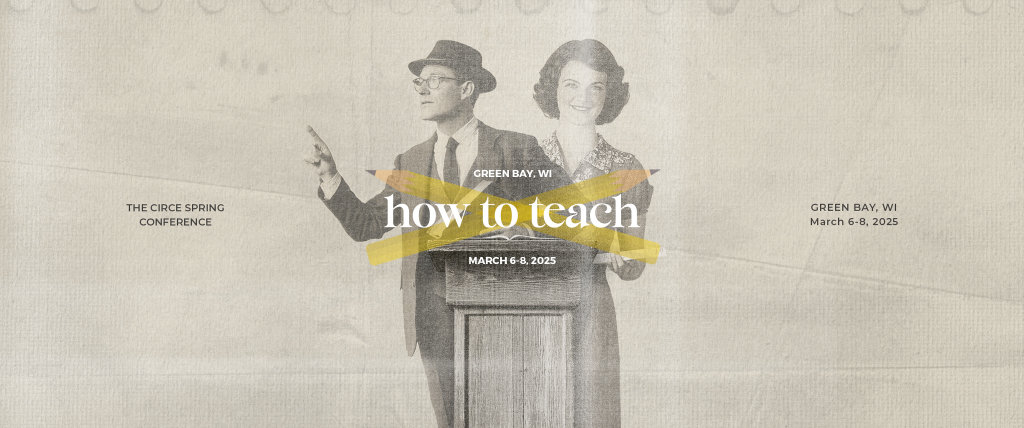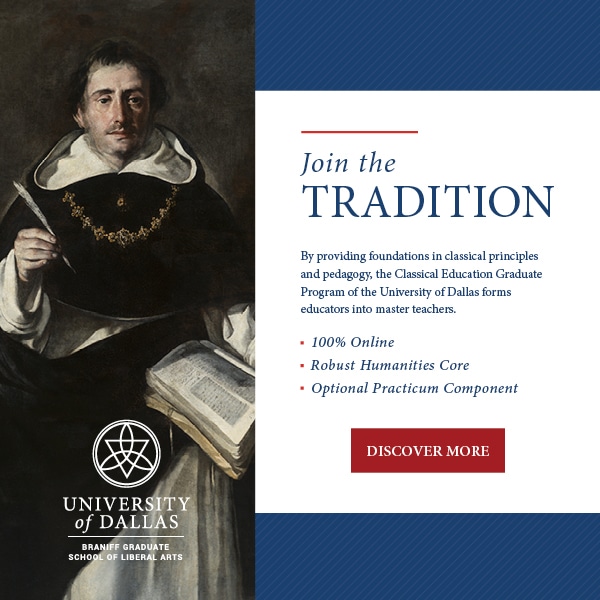Old Roads, Classics, and Classical Education

We travel along old roads. They are pathways purposefully cut out and trodden down for us by those who came before. Just like us, these individuals had places to go, things to do, and people to see. Often, in the heat of our current activities we forget that for millennia our ancestors lived surprisingly similar lives to ours in terms of aspirations and desired destinations. They paved our ways before us.
The other evening, I took a drive on an old road. I purposefully sought it out, but could just as well have unwittingly sped down it without realizing what it was – for had I simply happened upon that road it might never have occurred to me that it had any significant history at all. The stunning scenery of that road alone would have been sufficient to move me, with graceful hills encircling picturesque meadows, and early spring grasses almost as vivid as those of the Emerald Isle. But knowing that the road had once been a frontier trail, carved out of heavily wooded hills and cutting across several rivers, produced more than mere appreciation; it gave me wonder.
Why would something as ordinary as a small, relatively inconspicuous, winding highway do that? Because I found myself considering who had traveled that path before me, taken in those vistas, and crossed what must have been difficult, practically virgin terrain; what were their circumstances, where were they heading, what had their goals been, and what thoughts – hopes, dreams, burdens, and obstacles – had occupied their minds as they traveled? Why had they blessed me with this old road, their legacy?
As I consider the times in which such travel was significantly more challenging than it is today in terms of sheer physical effort alone, I marvel at the resolute courage of those who left the safety of hearth and home to set out for faraway places. They first shaped, and then followed, that road. Like Tolkien’s Bilbo, they no doubt encountered unexpected adventures, the likes of which I am sure – were I able to know them – would inspire me as much as the expedition to the Lonely Mountain had when I first heard it as a child of five.
It is because of these wonderings that I love old roads, and so I made my way one evening to Limestone Road, also known as Zane’s Trace. Completed in the late 1790s as a frontier road to open up the Northwest Territory, this road is one of many New World byways like the Great Buffalo Trace, a route followed by Native Americans into the “land of tomorrow” (also called the “dark and bloody ground” because of its frequent use for hunting) – into ken-tah-ten, the Iroquois word we pronounce as Kentucky.
Zane’s Trace meanders along traditional Native American thoroughfares like the Mingo and Moxahala Trails, and a Shawnee named Tomepomehala served as a guide to plot the road. The roadway was constructed by Ebenezer Zane, who became a colonel in the Virginia Colonial Militia and was a western 1788 delegate to the Virginia Ratifying Convention where he voted to ratify the United States Constitution.
The trace which bears his name winds its way from what is now Wheeling, West Virginia to Maysville, Kentucky. Originally probably cleared by tomahawk, it spans more than 230 miles and passes through territory in which ancient Native Americans long lived and labored – building huge mounds 2000 years ago that still stand as a profound testimony to their lives and culture.
Initially, Zane’s Trace was little more than a narrow track, not even broad enough to accommodate a wagon. It was widened in 1803, and for a five-year period beginning in 1825 it was improved as part of the new National Road, also known as the Cumberland Pike. Zane’s Trace thus became part of the first major improved highway built by the United States Federal Government.
Today, you can drive comfortably along Zane’s Trace in air conditioned and heated conveyances fully equipped with satellite radio stations, Global Positioning Systems, and telephone connections. But all of that would be of little value if the road had not already been laid, for you are following the path provided by the determined wanderings of untold numbers of Native Americans, frontiersman, pioneers, immigrants, and visionaries who made the way. Without them, without their dreams and their conviction and their labor, your luxurious journey today would not likely even be a possibility.
I relished my drive along that old road that evening. Watching the sun set as the highway wound through hills and valleys, I happily indulged in a love of old roads that reaches back into my childhood. For instance, I have an early recollection of traveling to Persepolis, one of the destinations of the ancient Royal Road rebuilt by Darius the Great in the 5th century BC. The Royal Road traveled from Sardis on the Aegean coast through Anatolia to Nineveh and Babylon, and then divided out to Ecbatana, Iran along the Great Khurasan Road while another branch headed to Susa and Persepolis, the ancient capital of the Achaemenid Empire.
The journey from one end to the other took ninety days on foot. As a child, wandering through the majestic ruins and dusty environs of Persepolis – in the days before they were closed to the public – it gave me a thrill to realize that I was where the Royal Road had led, and that it was said to have been traversed by mighty kings such as Midas, the Prophet Daniel, Queen Esther, and the Father of History himself, Herodotus.
Later, I took a bus through Afghanistan, a bus that nearly ran off a cliff – with me in it – to the ancient Silk Road portion crossing the Khyber Pass in the Hindu Kush mountain range. In circa 326 BC, Alexander the Great marched his army along the same road, leading militias of conquest. One of the destinations on the Silk Road in the North Plateau was Bamiyan, over 8,000 feet above sea level, whose citadel Shahr-e Zuhak was decimated by Genghis Khan in the siege of 1221.
I climbed up the gigantic Buddhas that were later destroyed by the Taliban in 2001. Images of thousands of soldiers, laying waste as they traveled, have remained imprinted in my mind ever since – along with the chill of knowing I gazed where so many men fought fiercely for their lives and died. I recall our guide claiming that Genghis Khan had razed the area so thoroughly it remained desolate for centuries.
My love of old roads was solidified when I visited Greece as a teen and again as a young adult. I was mesmerized as I walked the ancient pathways at Mycenae, probably first settled 5,000 BC, and wandered up to the temple of the Oracle in Delphi, the area perhaps in use since 4000 BC. I was enthralled by the Panathenaic Way, used for a thousand years from the 6th century BC to the 6th century AD; it traveled from the Dipylon, the main city gate of Athens, through the Agora to the Acropolis. I was beguiled by the Royal Road leading to the Palace of Knossos in Crete. Constructed circa 2000 BC in a region known to have been settled by humans in the Neolithic era, the Minoan Royal Road is one of the most ancient and well-preserved roads in Europe.
Old roads give me a particular thrill never replicated by any other experience…except that of reading old books. I was an avid reader as a child, but I distinctly remember the exhilaration of opening the first respectably old book, other than the Bible, that I read on my own. It was Dante’s Inferno. As I read through the cantos, I remember a growing awareness of having come upon an ancient way, a source of and resource for so much that I had been given faint glimpses of in my modern learning. It was new, yet familiar; it was foreign, yet kindred. Reading it was like traveling down an ancient road to a destination myriad others had sought before me.
I was filled with awe. Somewhat later, when I first read Homer’s Iliad and Odyssey, I became overwhelmed by the vast concourse of human experience and history that I suddenly perceived reaching out from the eons behind me, crossing the epochs, and intersecting with my own life.
A love affair with old books was thus born. Just as an old road takes me to destinations that people have sought for many years and that I, too, seek in our shared experience of traveling through life, such books take me places where many before me – some of them great in stature and influence, others obscured in the mists of history – have traveled.
In the early 1980s, I visited the Olduvai Gorge in the Great Rift Valley of Tanzania, East Africa, and traveled to Laetoli where prehistoric human footprints, preserved in volcanic ash, were discovered in 1976. The Laetoli tracks are no small set of footprints: the trail is 88 feet long and consists of about 70 human footprints (in fact, more footprints were discovered 150 feet away in 2016). The prints were made by three individuals, but one of them, while walking, stepped purposefully in the footprints of another. One cannot help but wonder why.
When I think about why I have stepped in someone else’s footprints – while hiking through the Himalayan mountains of India, the Alborz Range of Iran, up the flanks of Mt. Kilimanjaro, or in Arizona’s White Mountains – I often did so to follow the lead of a more experienced hiker who knew the terrain better but was first and foremost willing to try hazardous steps, going in front of me to test them before I followed. Millennia ago, at Laetoli, perhaps it was a child, a pregnant mother, or someone carrying a small child or other burden, who stepped into the footprints of a more experienced leader; perhaps that someone was being led in safety to a desired goal.
The Masai tribe, prevalent in East Africa, has a mythology associated with the Laetoli footprints, attributing them to Lakalanga, a great hero – large and strong – who led them to victory in battle. Whether that tale actually occurred is not crucial to its truth (though I suspect all mythological tales are rooted in reality): victory in battle can be seen as a metaphor for success against the challenges of life, and the footsteps of renowned Lakalanga had led those who followed him, in safety as a people, to their desired destination and goal.
When I read the classic works of ancient poets such as Hesiod (8th century BC), Lao Tzu (6th century BC), Virgil (1st century BC), the anonymous author of Beowulf (6th century AD), Ferdowsi (10th century AD), Chaucer (14th century AD), or Shakespeare (17th century AD), I am being led by heroes of giant stature like Lakalanga, stepping into the footsteps they have placed before me and into which countless others throughout the centuries have also stepped…often then going on to write their own books, just as those who took Zane’s Trace out into the Northwestern frontier went on to build new roads that stretched even further across our vast nation.
One could say that old roads are classical, for they lead the way as established paths which have proven reliable for centuries; like the classics themselves, which have been successful in weathering the tests and trials of time. Old roads and old books have shown us the way forward into a 21st century filled with comforts and benefits – such as life-saving medical care in the midst of a global pandemic – that our ancestors would not have imagined even in their wildest dreams.
As a classical educator, when students indicate they think they have come across a “new” book I remind them that, as with all roads, what they perceive as cutting edge is almost without a doubt built either on top of, or branching out of and spreading from, old books – that is, classics – which preceded them. As a classical educator, I teach students that old books, like old roads, are not only rich in heritage, valuable in the ability to instruct us about the human journey, and powerful in equipping us for the living of a virtuous life, they are means by which we safely reach good, true, beautiful, and desirable destinations.
Kate Deddens
Kate Deddens attended International Baccalaureate schools in Iran, India, and East Africa, and received a BA in the Liberal Arts from St. John’s College in Annapolis, Maryland and a MA in Mental Health therapy from Western Kentucky University. She married her college sweetheart and fellow St. John’s graduate, Ted, and for nearly three decades they have nurtured each other, a family, a home school, and a home-based business. They have four children and have home educated classically for over twenty years. Working as a tutor and facilitator, Kate is active in homeschooling communities and has also worked with Classical Conversations as a director and tutor, in program training and development, and as co-author of several CCMM publications such as the Classical Acts and Facts History cards. Her articles have sporadically appeared at The Imaginative Conservative, The Old Schoolhouse Magazine, Teach Them Diligently, and Classical Conversations Writers Circle.










